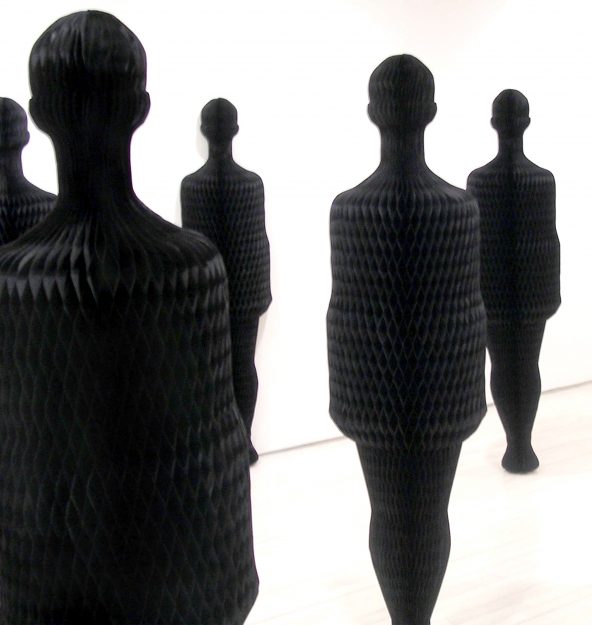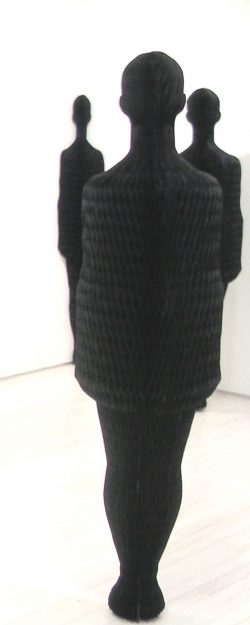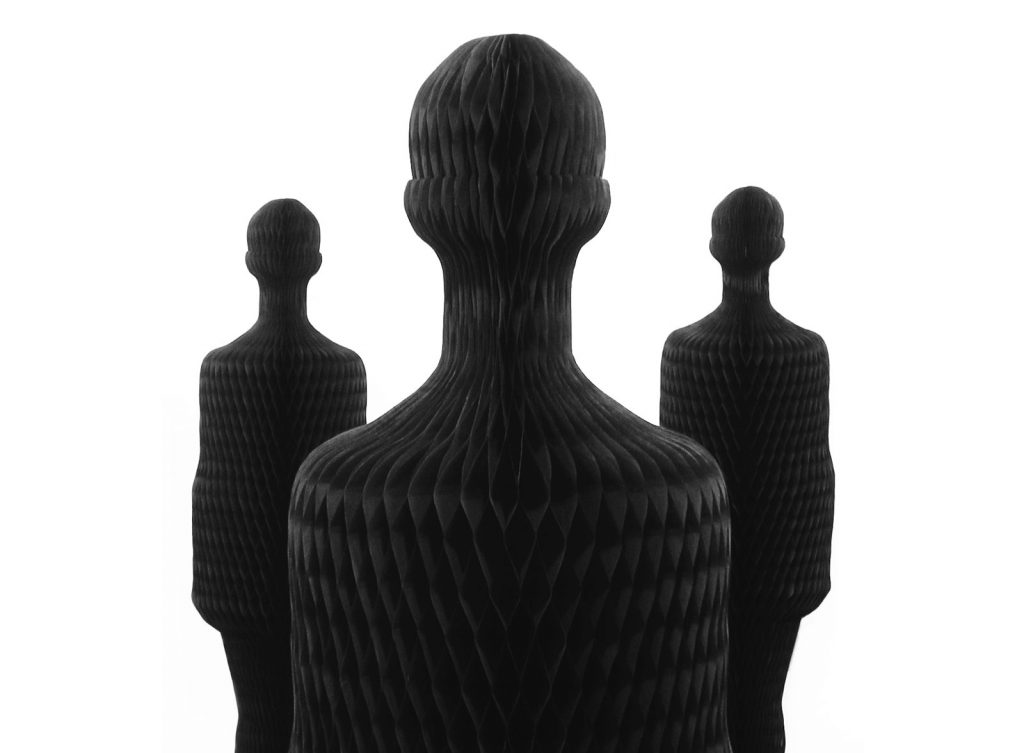As human beings we share a tendency to scramble for certainty whenever we realize that everything around us is in flux. In difficult times the stress of trying to find solid ground—something predictable to stand on—seems to intensify. But in truth, the very nature of our existence is forever in flux. Everything keeps changing, whether we’re aware of it or not.
What a predicament! We seem doomed to suffer simply because we have a deep-seated fear of how things really are. Our attempts to find lasting pleasure, lasting security, are at odds with the fact that we’re part of a dynamic system in which everything and everyone is in process.
So this is where we find ourselves: right in the middle of a dilemma. And it leaves us with some provocative questions: How can we live wholeheartedly in the face of impermanence, knowing that one day we’re going to die? What is it like to realize we can never completely and finally get it all together? Is it possible to increase our tolerance for instability and change? How can we make friends with unpredictability and uncertainty— and embrace them as vehicles to transform our lives?
The Buddha called impermanence one of the three distinguishing marks of our existence, an incontrovertible fact of life. But it’s something we seem to resist pretty strongly. We think that if only we did this or didn’t do that, somehow we could achieve a secure, dependable, controllable life. How disappointed we are when things don’t work out quite the way we planned.
Not long ago, I read an interview with the war correspondent Chris Hedges in which he used a phrase that seemed like a perfect description of our situation: “the moral ambiguity of human existence.” This refers, I think, to an essential choice that confronts us all: whether to cling to the false security of our fixed ideas and tribal views, even though they bring us only momentary satisfaction, or to overcome our fear and make the leap to living an authentic life. That phrase, “the moral ambiguity of human existence,” resonated strongly with me because it’s what I’ve been exploring for years: How can we relax and have a genuine, passionate relationship with the fundamental uncertainty, the groundlessness of being human?
My first teacher, Chögyam Trungpa, used to talk about the fundamental anxiety of being human. This anxiety or queasiness in the face of impermanence isn’t something that afflicts just a few of us; it’s an all-pervasive state that human beings share. But rather than being disheartened by the ambiguity, the uncertainty of life, what if we accepted it and relaxed into it? What if we said, “Yes, this is the way it is; this is what it means to be human,” and decided to sit down and enjoy the ride?
But what does the fundamental ambiguity of being human mean in terms of day-to-day life? Above all, it means understanding that everything changes. As the 8th-century Buddhist master Shantideva wrote in The Way of the Bodhisattva:
All that I possess and use
Is like the fleeting vision of a dream.
It fades into the realms of memory;
And fading, will be seen no more.
Whether we’re conscious of it or not, the ground is always shifting. Nothing lasts, including us. There are probably very few people who, at any given time, are consumed with the idea “I’m going to die,” but there is plenty of evidence that this thought, this fear, haunts us constantly. “I, too, am a brief and passing thing,” observed Shantideva.
When we resist change, it’s called suffering. But when we can let go and not struggle against it, that’s called enlightenment.
So what does it feel like to be human in this ambiguous, groundless state? For one thing, we grab at pleasure and try to avoid pain, but despite our efforts, we’re always alternating between the two. Under the illusion that experiencing constant security and well-being is the ideal state, we do all sorts of things to try to achieve it: eat, drink, drug, work too hard, spend hours online or watching TV. But somehow we never quite achieve the state of unwavering satisfaction we’re seeking. At times we feel good: physically nothing hurts, and mentally all’s well. Then it changes, and we’re hit with physical pain or mental anguish. I imagine it would even be possible to chart how pleasure and pain alternate in our lives, hour by hour, day after day, year in and year out, first one and then the other predominating.
But it’s not impermanence per se, or even knowing we’re going to die, that is the cause of our suffering, the Buddha taught. Rather, it’s our resistance to the fundamental uncertainty of our situation. Our discomfort arises from all of our effort to put ground under our feet, to realize our dream of constant okayness. When we resist change, it’s called suffering. But when we can completely let go and not struggle against it, when we can embrace the groundlessness of our situation and relax into its dynamic quality, that’s called enlightenment, or awakening to our true nature, to our fundamental goodness. Another word for this is freedom—freedom from struggling against the fundamental ambiguity of being human.
Related: Why We Shouldn’t Be Afraid of Suffering

What the fundamental ambiguity of being human points to is that as much as we want to, we can never say, “This is the only true way. This is how it is. End of discussion.” In the Chris Hedges interview that I read, he talked about the pain that ensues when a group or religion insists that its view is the one true view. As individuals we, too, have plenty of fundamentalist tendencies. We use them to comfort ourselves. We grab on to a position or belief as a way of neatly explaining reality, unwilling to tolerate the uncertainty and discomfort of staying open to other possibilities. We cling to that position as our personal platform and become very dogmatic about it.
The root of these fundamentalist tendencies, these dogmatic tendencies, is a fixed identity—a fixed view we have of ourselves as good or bad, worth or unworthy, this or that. With a fixed identity, we have to busy ourselves with trying to rearrange reality, because reality doesn’t always conform to our view. The discomfort associated with the fundamental ambiguity of being human comes from our attachment to wanting things to be a certain way. The Tibetan word for attachment is shenpa. My teacher Dzigar Kongtrül calls shenpa the barometer of ego clinging, a gauge of our self-involvement and self-importance. Shenpa has a visceral quality associated with grasping or, conversely, pushing away. This is the feeling of I like, I want, I need and I don’t like, I don’t want, I don’t need, I want it to go away. I think of shenpa as being hooked. It’s that stuck feeling, that tightening or closing down or withdrawing we experience when we’re uncomfortable with what’s going on. Shenpa is also the urge to find relief from those feelings by clinging to something that gives us pleasure.
For the most part, our attachment, our shenpa, arises involuntarily— our habitual response to feeling insecure. When we’re hooked, we turn to anything to relieve the discomfort—food, alcohol, sex, shopping, being critical or unkind. But there is something more fruitful we can do when that edgy feeling arises. It’s similar to the way we can deal with pain. One popular way of relating to physical pain is mindfulness meditation. It involves directing your full attention to the pain and breathing in and out of the spot that hurts. Instead of trying to avoid the discomfort, you open yourself completely to it. You become receptive to the painful sensation without dwelling on the story your mind has concocted: It’s bad; I shouldn’t feel this way; maybe it will never go away.
When you contact the all-worked-up feeling of shenpa, the basic instruction is the same as in dealing with physical pain. Whether it’s a feeling of I like or I don’t like, or an emotional state like loneliness, depression, or anxiety, you open yourself fully to the sensation, free of interpretation. If you’ve tried this approach with physical pain, you know that the result can be quite miraculous. When you give your full attention to your knee or your back or your head—whatever hurts—and drop the good/bad, right/wrong story line and simply experience the pain directly for even a short time, then your ideas about the pain, and often the pain itself, will dissolve.
Related: Don’t Bite the Hook
In My Stroke of Insight, the brain scientist Jill Bolte Taylor’s book about her recovery from a massive stroke, she explains the physiological mechanism behind emotion: an emotion like anger that’s an automatic response lasts just 90 seconds from the moment it’s triggered until it runs its course. One and a half minutes, that’s all. When it lasts any longer, which it usually does, it’s because we’ve chosen to rekindle it.
The fact of the shifting, changing nature of our emotions is something we could take advantage of. But do we? No. Instead, when an emotion comes up, we fuel it with our thoughts, and what should last one and a half minutes may be drawn out for 10 or 20 years. We just keep recycling the story line. We keep strengthening our old habits.

Most of us have physical or mental conditions that have caused us distress in the past. And when we get a whiff of one coming—an incipient asthma attack, a symptom of chronic fatigue, a twinge of anxiety—we panic. Instead of relaxing with the feeling and letting it do its minute and a half while we’re fully open and receptive to it, we say, “Oh no, oh no, here it is again.” We refuse to feel fundamental ambiguity when it comes in this form, so we do the thing that will be most detrimental to us: we rev up our thoughts about it. What if this happens? What if that happens? We stir up a lot of mental activity. Body, speech, and mind become engaged in running away from the feeling, which only keeps it going and going and going.
We can counter this response by training in being present. When you contact groundlessness, one way to deal with that edgy, queasy feeling is to do the one-and-a-half-minute practice:
Acknowledge the feeling, give it your full, compassionate, even welcoming attention, and even if it’s only for a few seconds, drop the story line about the feeling. This allows you to have a direct experience of it, free of interpretation. Don’t fuel it with concepts or opinions about whether it’s good or bad. Just be present with the sensation. Where is it located in your body? Does it remains the same for very long? Does it shift and change?
Ego or fixed identity doesn’t just mean we have a fixed idea about ourselves. It also means that we have a fixed idea about everything we perceive. I have a fixed idea about you; you have a fixed idea about me. And once there is that feeling of separation, it gives rise to strong emotions. In Buddhism, strong emotions like anger, craving, pride, and jealousy are known as kleshas—conflicting emotions that cloud the mind. The kleshas are our vehicle for escaping groundlessness, and therefore every time we give in to them, our preexisting habits are reinforced. In Buddhism, going around and around, recycling the same patterns, is called samsara. And samsara equals pain.
We keep trying to get away from the fundamental ambiguity of being human, and we can’t. We can’t escape it any more than we can escape change, any more than we can escape death. The cause of our suffering is our reaction to the reality of no escape: ego clinging and all the trouble that stems from it, all the things that make it difficult for us to be comfortable in our own skin and get along with one another.
If the way to deal with those feelings is to stay present with them without fueling the story line, then it begs the question: How do we get in touch with the fundamental ambiguity of being human in the first place? In fact, it’s not difficult, because underlying uneasiness is usually present in our lives. It’s pretty easy to recognize but not so easy to interrupt. We may experience this uneasiness as anything from slight edginess to sheer terror. Anxiety makes us feel vulnerable, which we generally don’t like. Vulnerability comes in many guises. We may feel off balance, as if we don’t know what’s going on, don’t have a handle on things. We may feel lonely or depressed or angry. Most of us want to avoid emotions that make us feel vulnerable, so we’ll do almost anything to get away from them.
But if instead of thinking of these feelings as bad, we could think of them as road signs or barometers that tell us we’re in touch with groundlessness, then we would see the feelings for what they really are: the gateway to liberation, an open doorway to freedom from suffering, the path to our deepest well-being and joy. We have a choice. We can spend our whole life suffering because we can’t relax with how things really are, or we can relax and embrace the open-endedness of the human situation, which is fresh, unfixated, unbiased.
So the challenge is to notice the emotional tug of shenpa when it arises and to stay with it for one and a half minutes without the storyline. Can you do this once a day, or many times throughout the day, as the feeling arises? This is the challenge. This is the process of unmasking, letting go, opening the mind and heart.
♦
From Living Beautifully with Uncertainty and Change. © 2013. Reprinted with permission of Shambhala Publications.
Thank you for subscribing to Tricycle! As a nonprofit, we depend on readers like you to keep Buddhist teachings and practices widely available.
